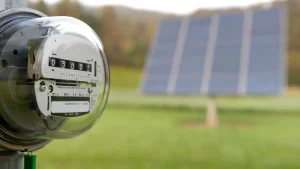Proven NEM 3.0 Strategies California Solar Installers Use in 2025

NEM 3.0 Reality Check: How California Solar Installers Are Adapting to Survive (And Thrive) in 2025
The solar landscape in California shifted dramatically when NEM 3.0 took effect in April 2023, and by now, every installer knows the old playbook doesn’t work anymore. If you’re still trying to figure out how to maintain profitability while delivering real value to customers under these new rules, you’re not alone. The installers who are succeeding have made fundamental changes to their approach – and it’s time you learned their strategies.
What NEM 3.0 Actually Means for Your Business

Net Energy Metering 3.0 represents the most significant policy shift California’s solar industry has seen in over a decade. Gone are the days when homeowners could rely on generous retail rate compensation for excess solar production. Under NEM 3.0, export compensation rates have dropped by roughly 75%, fundamentally changing the economics of solar installations.
For installers, this means your customer conversations need to evolve. You’re no longer selling a system that pays for itself primarily through excess generation credits. Instead, you’re selling energy independence, backup power, and long-term savings through strategic consumption timing.
The policy applies to all new solar applications submitted after April 14, 2023, to investor-owned utilities like PG&E, SCE, and SDG&E. Municipal utilities and cooperatives maintain their own policies, but many are following similar trends toward reduced export compensation.
The Battery Storage Game-Changer
Battery storage has transformed from a nice-to-have upgrade to an essential component of most California solar installations. Here’s why smart installers are making storage central to their NEM 3.0 strategy:
Time-of-Use Optimization: With export rates varying dramatically throughout the day, batteries allow customers to store solar energy during low-value periods and use it during high-rate evening hours. This shift in consumption patterns can dramatically improve system economics.
Backup Power Value: California’s ongoing wildfire risks and PSPS events have made backup power a compelling selling point. Installers who can articulate the peace-of-mind value alongside the financial benefits are closing more deals.
Load Shifting Capabilities: Modern battery systems paired with smart energy management can automatically shift energy usage to maximize savings under time-of-use rate structures. This technology-driven approach appeals to tech-savvy California homeowners.
Compliance Best Practices That Protect Your Business
NEM 3.0 compliance isn’t just about following rules – it’s about protecting your business from costly mistakes and ensuring smooth project completion. Successful installers have developed systematic approaches to compliance:
Application Timing Strategy: Understanding the nuances of application submission timing can save projects thousands of dollars. While NEM 2.0 grandfathering ended, installers who master the current interconnection process avoid delays that frustrate customers.
Documentation Excellence: Utilities are scrutinizing applications more carefully than ever. Installers who invest in thorough documentation processes experience fewer rejections and faster approvals. This means training your team on proper permit applications, system design documentation, and utility-specific requirements.
Customer Communication Protocols: Clear communication about realistic timelines and expectations prevents customer frustration. Develop standardized communication workflows that keep customers informed throughout the interconnection process.
System Design Strategies for Maximum Value
The most successful installers under NEM 3.0 have fundamentally rethought their approach to system design. Traditional oversizing strategies no longer make economic sense for most customers.
Right-Sizing Based on Consumption Patterns: Modern design software allows you to analyze customer usage data and design systems that maximize self-consumption rather than excess production. This approach improves project economics while reducing customer payback periods.
Panel Orientation Optimization: With time-of-use rates heavily penalizing evening usage, west-facing panels that produce power later in the day can provide more value than traditional south-facing installations. Understanding when your customer uses energy most allows for strategic panel placement.
Smart Inverter Integration: Modern inverters with energy management capabilities can automatically optimize energy usage patterns. Installers who understand and can explain these features differentiate themselves from competitors still focused solely on basic solar production.
Financial Modeling That Closes Deals

Your financial presentations need to reflect NEM 3.0 realities while remaining compelling to customers. The installers who are thriving have developed new approaches to presenting solar value:
Total Cost of Ownership Models: Instead of focusing primarily on energy bill elimination, successful presentations compare the total cost of owning solar plus storage versus remaining utility-dependent over 20-25 years. This broader view often reveals compelling savings even under NEM 3.0.
Backup Power Value Quantification: Help customers understand the dollar value of backup power by calculating potential losses from extended outages. Food spoilage, lost productivity, and hotel costs during PSPS events add up quickly.
Rate Escalation Protection: Utility rates continue climbing while solar costs have stabilized. Presentations that effectively communicate protection from future rate increases resonate strongly with cost-conscious customers.
California Solar Installers: Marketing Messages That Work in the New Era

Successful solar installers have shifted their marketing messaging to address NEM 3.0 realities head-on rather than avoiding the topic. Customers are aware of the changes, and transparency builds trust.
Energy Independence Focus: Position solar plus storage as the path to true energy independence rather than just bill reduction. This message resonates strongly in California’s uncertain utility environment.
Technology Leadership: Emphasize your expertise with the latest energy management technologies. Customers want to work with installers who understand modern smart home integration and energy optimization.
Long-term Partnership: Frame your relationship as a long-term partnership in energy management rather than a one-time equipment sale. Installers who offer ongoing monitoring, maintenance, and optimization services build stronger customer relationships.
NEM 3.0 Looking Ahead: Preparing for Continued Changes
California’s solar policies will continue evolving, and successful installers are positioning themselves for future changes. The National Energy Marketplace program and potential federal policy shifts could create new opportunities for prepared installers.
Stay connected with industry associations, continue education on emerging technologies, and maintain flexibility in your business model. The installers who thrive long-term are those who adapt quickly to changing conditions while maintaining focus on customer value.
Energyscape Renewables—Engineering the Path Forward in the NEM 3.0 Era
NEM 3.0 has reshaped the solar landscape in California, shifting the focus from simple net metering to comprehensive energy solutions that maximize self-consumption and battery integration. For solar installers and EPCs, this change is not a roadblock—it’s a roadmap to new business models, smarter system design, and long-term growth.
Energyscape Renewables is your strategic partner in navigating this transition. Our expert team supports every stage of your solar project—from sales proposals and battery-ready plan sets to interconnection, PE stamping, and permitting—ensuring your designs align with today’s policy and performance expectations. We help you communicate new value propositions effectively with up-to-date financial modeling inputs, giving your sales teams the tools they need to close under the NEM 3.0 framework.
With digital innovations from Sunscape, you can streamline project data, enhance accuracy, and move faster from lead to install. And as battery storage becomes central to solar value, we’re ready with engineering support that seamlessly integrates storage into residential and commercial system designs.
The future of solar is still bright—but it belongs to those who evolve. With Energyscape Renewables by your side, you’re equipped to design smarter, sell with confidence, and deliver the advanced solar + storage solutions your customers need in 2025 and beyond.

1 Comment
[…] Interested in reading about the Proven NEM 3.0 Strategies California Solar Installers are using in 2025. Click Here! […]